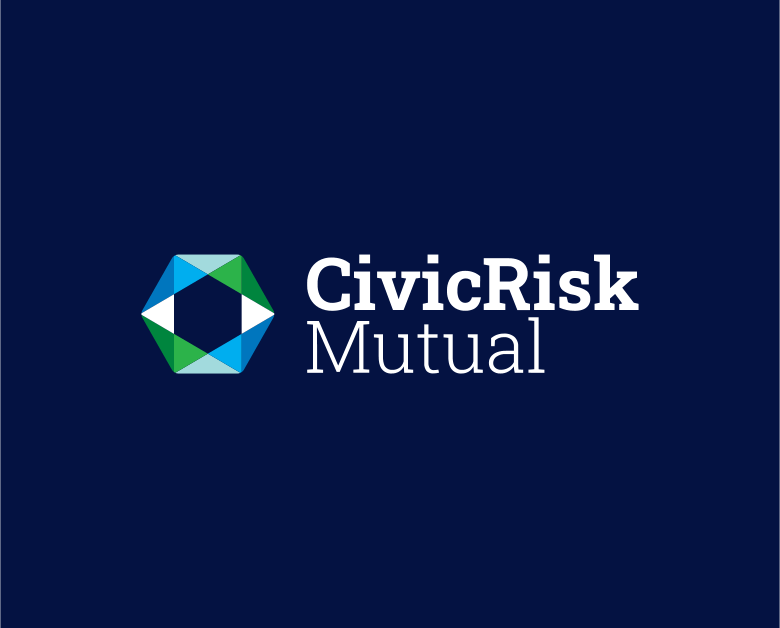Unforeseen or dormant risks form the foundation of challenges local authorities encounter. Even a minor oversight can lead to critical consequences such as resource consumption, a compromise in public security, or cause injury and damage.
The origins of certain threats are well-known and have been a part of risk management initiatives for a long time. Whereas, in other domains such as natural disasters, technological sophistication and societal shifts, new potential hazards can emerge seemingly overnight.
It’s necessary to be aware of evolving risks so you can take an adaptable approach to managing them. Effective risk identification is the first step in reducing latent issues and taking protective measures for the future.
Let’s talk about some common concerns local government bodies face so you can get the risk management solutions you need. If you have questions about any items on the list below, you can speak with CivicRisk Mutual about the tailored protection services available. You may already be covered for some of them.
What Are the Common Risks Faced by Councils?
Cybersecurity and Data Security
Many councils may believe they are not prime targets for cyberattacks. Yet, councils manage a range of public services and handle sensitive information, such as financial or health data. This can make them an attractive target for cybercriminals.
As digital technology grows in complexity, cybersecurity poses a more prevalent and sophisticated danger to councils. In fact, the ASD Cyber Threat Report 2022 found that 12.9% of cybercrime reporting nationwide came from state or local governments, placing it as the second-highest reporting sector. Meanwhile, many councils continue to operate without a cybersecurity risk management plan or incident reporting process.
Today’s cyber threats commonly entail situations such as:
- Phishing.
- Data removal or access blockages.
- Identity theft.
- Sensitive information leaks.
- Ransomware attacks.
- Social media hacks.
Nobody can control when or how they may face a cyberattack. But, you can put contingency measures in place — such as assessing data type and storage methods — to reduce exposure and potential damage.
Public and Worker Liability
Positions of public authority hold increased power. And with increased power comes increased responsibility. But what happens when a local authority or employee faces ‘mismanagement’ accusations for loss sustained by a third party?
Public liability duty is a duty of care for councils and employees responsible for civil assets, funds and information to ensure they are put to reasonable use. Any actual or alleged claim made by members of the community, suppliers or even employees can be devastating to local governments. These claims may involve instances such as:
- Employee misconduct.
- Misappropriation of funds.
- Ethics violations.
- Negligence and injury.
Civil lawsuits over these issues can cost local governments millions of dollars annually. Enacting a risk-averse strategy to minimise the implications of public and worker liability (along with resulting lawsuits) safeguards councils against the hassle of legal expenses and possible loss of public confidence.
Property
Residents continuously expect more from their public property, while the available budgets to maintain these assets never seem to increase proportionally. Your Council NSW reported that 2021 saw local bodies across NSW reporting a $201 million financial shortfall for asset management alone.
Councils are responsible for evaluating the wellness of community infrastructures to optimise public safety and avoid injuries or even deaths. On top of this, such assets are expected to withstand natural disasters and increasingly extreme weather events. Council assets include infrastructure such as:
- Public buildings.
- Public parks and pools.
- Roads.
- Bridges.
- Commercial and residential buildings.
- Utilities (e.g. water, sewerage, recycling).
As populations grow and infrastructure ages — not to mention the challenges of severe weather conditions — councils must make tough financial decisions to prioritise safety and provide value within increasingly tight limits.
More than ever, the efficient allocation of available resources requires a highly strategic and risk-based approach. Given the variance in financial shortfall in the report mentioned above, local councils may wish to seek asset management guidance based on their unique risk profiles and budget constraints.
Crime
Crime can impact every industry, including the local government sector. Criminal acts in the public sector can include theft, fraud, extortion, forgery and more. When these events do happen, they can hinder operations and cause major financial loss.
On the lighter end, even petty crimes such as graffiti on council property can etch away at valuable resources. At a more serious scale, scenarios like political and security threats can cease council operations for days at a time.
But, the issue here is not limited to the operational or financial realms. Fraud and extortion activities can erode public trust and confidence in local government, potentially damaging the authority’s reputation and residents’ local pride.
A comprehensive criminal risk assessment can help to identify vulnerabilities in existing processes. Even with minor changes, local governments can more accurately monitor and integrate data to reduce the damage of criminal activity.
Community Support Projects
Of course, councils are financially and socially invested in providing value and local identity through community support projects. These projects may include markets, concerts, parades, performances, sporting tournaments and other public-facing occasions. Social events nurture stronger relationships between council teams and the local community.
However, these events can have associated risks that councils may face if left unprepared or unprotected. For example, severe weather conditions can cause unexpected cancellations of outdoor functions. Postponing for another day can be a logistical nightmare and cuts into resources. Dodgy scaffolding or overlooked asset damage can cause personal injury.
Local authorities can face a number of risks, ranging from additional expenses, unexpected lawsuits, emerging public relations challenges or staffing shortages as human resources solve logistical or legal challenges.
These scenarios are all budding concerns arising from an ultimately well-meaning community spirit. By determining the likelihood and consequences of possible issues, event organisers can prioritise risk to ensure systematic elimination or mitigation.
Professional Indemnity
Professional indemnity refers to a situation where a community member suffers a loss after relying on the advice, practice or representation of a council or representative. The individual may choose to file a lawsuit for their loss.
The risks involved with professional indemnity include alleged or actual negligence. Further, a case of professional indemnity can involve physical and intangible breaches of safety or confidentiality. Public buildings, roads, parks and open spaces all fall under a local council’s jurisdiction. Local authorities are responsible for the management and maintenance of those spaces. Either real or apparent negligence resulting in injuries or incidents can lead to affected third parties making costly claims.
While direct hazards apply to public spaces, professional indemnity can also flow into other areas, such as:
- Lost or leaked data and documents.
- Unintentional intellectual property violations.
- Inadvertent breach of confidentiality.
- Other breaches of duty or representation.
Councils need protection to moderate the financial burden of these cases and to safeguard their public reputation, integrity and assets. Securing this protection is essential for maintaining trust, operations and effective governance.
Outsourcing Roles
Local authorities are invested in providing public services that create value and cater to the needs of their communities. To keep up with shifting societal demands, population growth and fluctuating economies, they may be pushed to find new and more effective delivery models for these services.
As such, it’s increasingly common for councils to provide shared services (by partnering with other councils), private sector partnerships and outsourcing. However, these initiatives do come with implications. Particularly in light of new delivery frameworks, councils come under intense formal and informal scrutiny when issues arise.
There is not always a clear agreement between leaders around the degree of risk they are willing to undertake. Similarly, there can be discrepancies between council and third-party service providers about risk culture, mitigation and control strategies. Given the increasingly tight budget limitations and augmented need for innovative solutions, local bodies should prepare for unexpected risks that arise from collaborative service delivery.
Tailoring Risk Management to the Risk Profile of a Council
No two regions or governing bodies are the same. Different communities face varied exposure to risk depending on size, location and operations, meaning there is no one-size-fits-all approach to risk management.
A tailored risk management assessment thoroughly analyses the scope of threat each council region is exposed to. This determines the likeliness of a potential problem arising as well as the type and severity of consequences when it does. Assessment results will recommend measures and contingencies required to increase resilience to risk, protecting councils from costly financial, operational and public standing drawbacks.
CivicRisk Mutual provides customised risk assessments to help members understand where dangers lie. As a member, you can access risk management plans and protection to ensure you are geared with the strategy and protection you need for minimal operational or financial disruption.
CivicRisk Mutual: Your Council’s Answer to Risk Management
There’s no denying that hazards are out there, and when they arise it’s important to be prepared. As an organisation designed to help members better protect their councils and communities, we provide specific coverage for assets, liabilities and risk management services, including:
- Asset valuation.
- Brokerage and advice on emerging risks.
- Claims management support and guidance.
- Continuous risk improvement program.
- Risk Enhance program.
- Training and professional development.
Enhance your resilience to perceptible threats so you can provide unwavering support to your communities over the long term. Learn more about our risk management programs by connecting with CivicRisk Mutual today.


